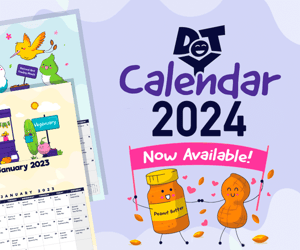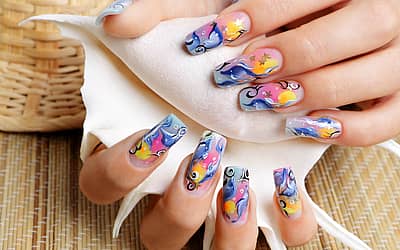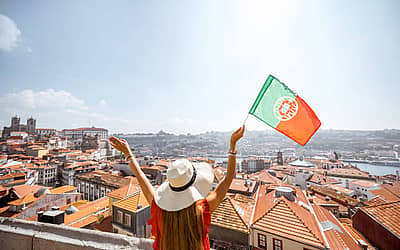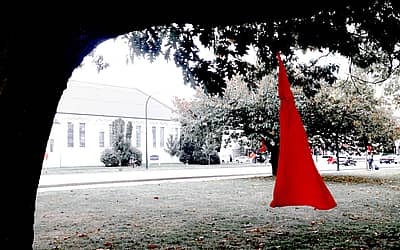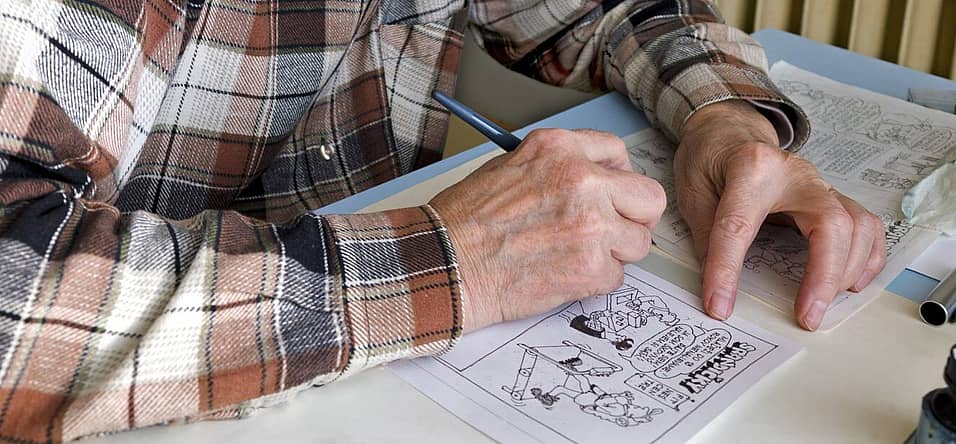
National Cartoonists Day
Take a walk down memory lane by revisiting the beloved, charming, often bizarre cartoons of your childhood like Calvin and Hobbes, or discover new ones.
They were the favorite part of the morning paper for many of us growing up, when we were introduced to the wacky and sometimes bizarre worlds of the characters inside their three-panel soul. As we grew older and realized there was more to the world than Hagar and Garfield, we discovered deeply compelling stories like Maus and Neil Gaiman’s Sandman. World upon barely possible world gets told in frame and boxes, word bubbles and strokes of pen, and the people who make it possible are Cartoonists, and National Cartoonists Day is dedicated to them and their craft.
History of National Cartoonists Day
In 1895 a man named Richard F. Outcault introduced a small bald kid in a yellow nightshirt to the world in an incredibly popular publication in the big apple at the time, the New York World. While the paper itself was looked upon with a sort of disdain by ‘real’ journalists of the time, the yellow kid was embraced by people everywhere. Little did Richard know that when he first created this character, it would lead to a revolution in how stories were told and presented in sequential art pieces (That’s comics kids), but would in fact create a new standard piece of content for newspapers everywhere.
The Yellow Kid was an archetype of the world, rather than a character in and of itself. Richard recounted that as he walked the slums of the city on his rounds, he would discover the kid walking out of houses, or sitting and hanging about on doorsteps. The archetypical “kid” was always warm and sunny, friendly, generous, and free of malice and selfishness. How amazing that Richard saw all the good in the world in the worst parts of it, perhaps that’s a lesson in and of itself.
The longest-running newspaper cartoon in history, to date, is called The Katzenjammer Kids, which debuted in 1897 in the American Humorist, and has changed over into the hands of three different cartoonists. The original cartoonist of the comic, Rudolph Dirks, was one of the first to regularly indicate dialogue through speech balloons; speech balloons were standardized as the form in which cartoonists indicated dialogue by the early 1900s, and is still being used today.
The Katzenjammer Kids cartoon was even made into a play in 1903!
The longest known individual cartoon strip is over 1,100 feet in length, and was created by female cartoonist Mons Selvam in Chennai, India in 2019. The cartoon strip is focused on Mons’ childhood, and some of her memories of her village through her fictional character, Gundomalli. Mons Selvam considers herself a “happiness illustrator” as well as a cartoonist.
Cartoonists’ Day was created to celebrate this man and his accomplishments, and all the good he brought to the world as a result. Everything from our Sunday Comics to animation can be linked back to him and his creation… Just a simple bald kid in a yellow nightshirt.
Today, many cartoons are recognized not only in the printed media of the comics section, but on television as well. One of the first film cartoons was released for viewing in 1908, and is considered to be Fantasmagorie, a hand-drawn animated by French cartoonist Émile Cohl. The cartoon, only one minute and twenty seconds in length, consists of a stick figure man running into and morphing into other objects. The short animated cartoon was derived from 700 hand-drawn illustrations. Émile Cohl would go on to be referred to as the “father of the animated cartoon.”
Not all cartoonists aim to make you laugh but also use the media as a source of discussion. With the rise of the popular political cartoon, cartoonists now use comics and illustration as a form of political discourse. The political cartoon is an illustration, often with a caricature, to convey commentary on current events or politics. Instead of finding these on the funny pages of a newspaper, they are often found in the editorial pages of a newspaper or journal.
For many years, cartoons were viewed as low-brow in comparison to other forms of art, but the work of cartoonists is important and underappreciated. The art form has grown in popularity with a younger generation that seeks to utilize both art and culture in their media expression.
The internet has allowed cartoonists to reach a larger crowd than when only a select few cartoons were chosen for the Sunday comics section of a newspaper or shown during Saturday morning cartoon times. Today, the two-dimensional art known as comics are not only available to be seen in newspapers but magazines, books, websites, social media sites, and blogs as well. Cartoonists such as detail-oriented John Broadley and satirical cartoonist Marc Bell have huge online followings and supporters.
How to celebrate National Cartoonists Day
Cartoonists’ day is best celebrated by picking up a comic you used to know and love, and walking down memory lane on the part it played in you growing up.
Open up that worn Calvin and Hobbes comic book by Bill Watterson to find yourself reminiscing of memories of an adventurous boy and his stuffed tiger. Calvin and Hobbes is commonly referred to as the last great newspaper comic. Not your cup of tea? Snicker along as you turn the pages to the lastest Dilbert cartoons, created by cartoonist Scott Adams. While more mature in content, anyone who has worked in an average office space can relate to the snarky humor presented in Dilbert.
Online comics are now a thing, and some of them have been running for 12 years or more, like Randy Milhollands Something Positive. Deep characters, compelling storylines, and a rapier wit make it a joy to read, though it’s certainly not for the easily offended. Whether this comic or another one, discovering new worlds to experience through comics is a great way to spend Cartoonists’ day! You could even draw your own!
